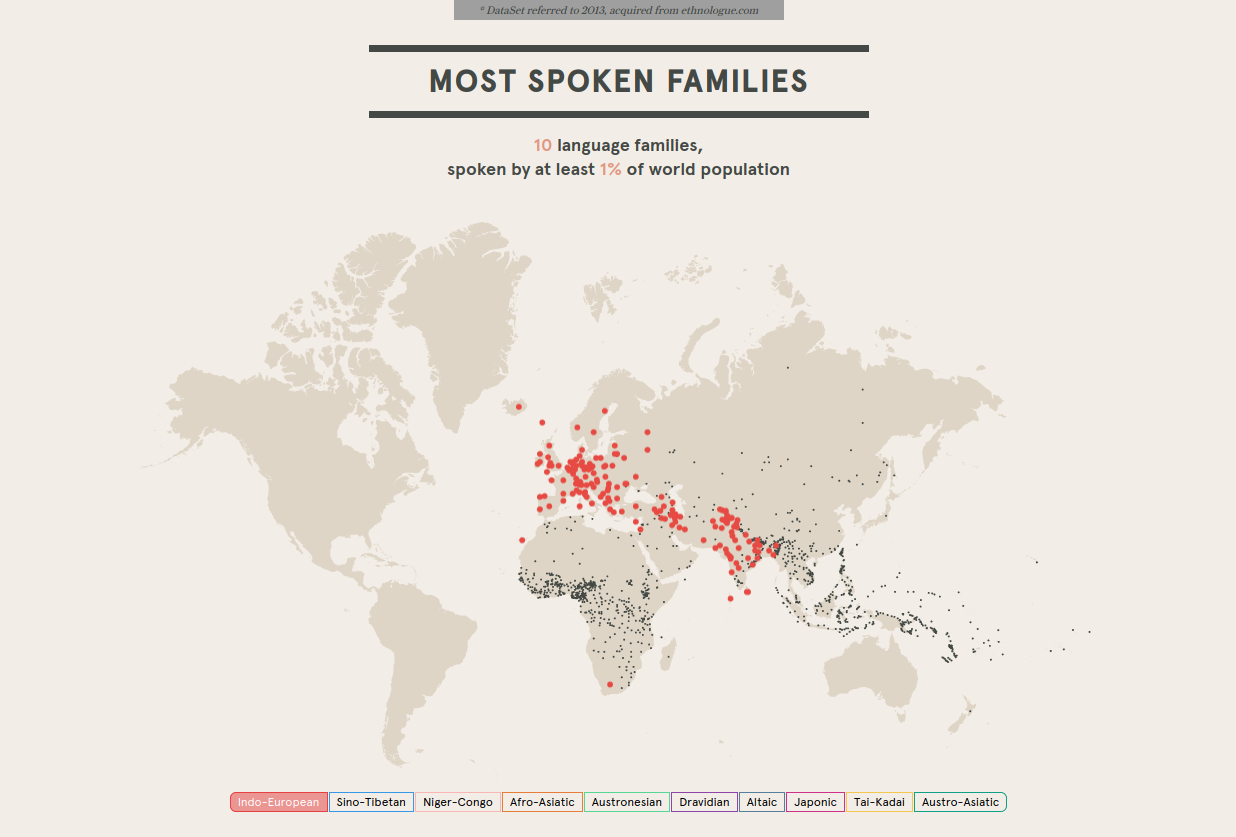Interactive Visualizations
Interactive Map of the Most Spoken Language Families
There are 6,500 languages spoken in the world today. That may seem like a staggering amount of different vocabulary, but what you may not realize is that most of these languages can be tied to one of the ten most spoken families of languages. This comprehensive interactive visualization was compiled with information from The World Atlas of Language Structures which is a database of structural properties of languages.
Click below to zoom

Click here for the original interactive version
This data allowed experts to break down the world’s languages into the following ten categories: Indo-European, Sino-Tibetan, Niger-Congo, Afro-Asiatic, Austronesian, Dravidian, Altaic, Japonic, Tai-Kadai and Austro-Asiatic. Over 86 percent of the world’s population speak one of these ten most spoken language families.
This visualization put together by the team at the Puff Puff Project shows how the worlds languages came to be. It also displays the ten most spoken languages in the world by one million speakers. Shown with colored dots in various sizes you can see not only the most spoken languages in the world but from which family they originated from.
The top ten most spoken languages by millions of speakers are Mandarin (848 million), Spanish (406 million), English (335 million), Hindi (260 million), Portuguese (202 million), Bengali (193 million), Russian (162 million), Japanese (122 million), Javanese (84 million) and German (83 million).
There is also a cool section on the “Loanwords” of various languages. These are words that are adopted from a different language with little or no modification. There is an average of 14.68 exchange words among languages across the globe. Clicking on this interactive map (the last map on the bottom of the page) shows you just how far loanwords from the top ten most spoken languages have traveled and what languages use them in their own vernacular.